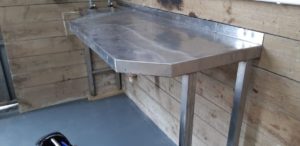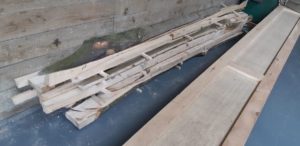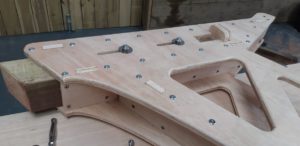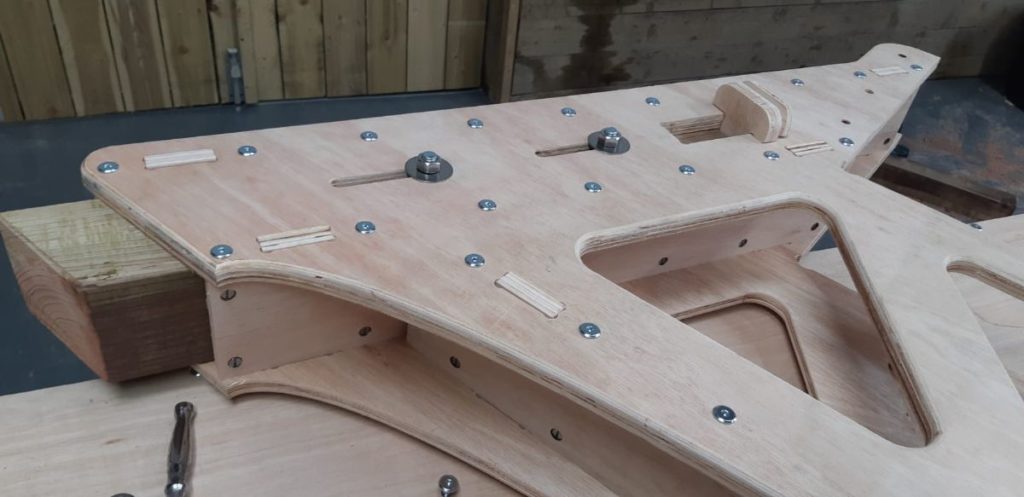Everyone loves a “zero-to-hero” story and the Panther Shed is that story this week. Previously we reported that we had cut up the timber and picked up and assembled the jig. What might have been apparent from the picture of the workshop was that there wasn’t really very much else in there. It could be argued that with enough time that one could build anything with a bent knife and a hammer, but to build things quickly and accurately a certain amount of stuff is needed.

A whirlwind of activity this week has seen the workshop equipped with a bench, a saw, tool storage and a sink, and we are at a point of development where we could genuinely describe the space as a workshop. Windows and a pedestrian door remain on the to-do list, but we are making progress. The ash is neatly stacked in stick (to allow air to circulate around the stack for it to dry), and with Sol from Parnall Marine‘s assistance, we got the jig positioned straight and flat and have levelled the top reference surface to an accuracy of about half a millimetre.
Wooden structures do move a bit with changes in humidity and temperature and we will let it rest for a week before we carry out a final adjustment. We’ve got a set of reference marks down the centre of the jig so we can check it doesn’t move during construction using a laser. The sink is a really positive step forward as it means that we can not only carry out mundane tasks like hand washing but also fill a kettle to use to make coffee, which will have a measurable effect on progress.


Another big step forward this week was Sol’s work on constructing the steam box which we will use to bend the cut ash to the shapes required to reinforce the frames. Traditionally these devices are powered with a wood fire that heats a container of water. More modern ones use a gas burner, which provides a bit more control. After a bit of reflection we have decided that a more progressive, and altogether less dangerous approach (it being a wooden building full of dry wooden material and Spitfire wings!), will be to use an electric wallpaper stripper that we can plug into a socket.















